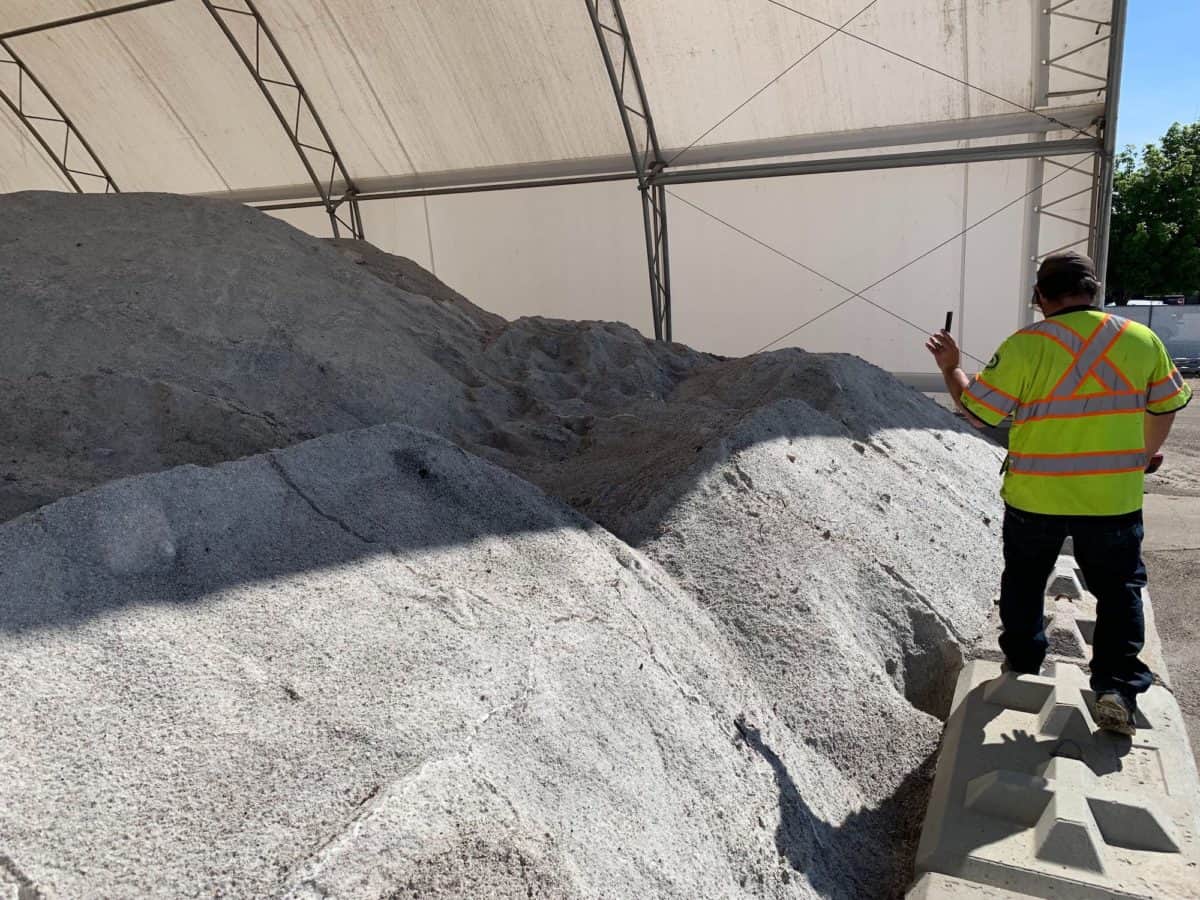September 26, 2019
Stockpile Measurement Methods That Work

Measurements shouldn’t require a significant amount of time, energy, or money and it should be simple to complete. We believe measuring stockpiles should be easy. With this in mind, we developed stockpile measurement solutions tailored for building material companies. There are various stockpile measurement methods. Stockpile Reports has ranked them from most affordable and efficient to the least efficient and expensive.
#1 Measure Stockpiles with an iPhone
Measuring with an iPhone is by far the simplest way to measure small, freestanding piles or piles that are indoors, under canopies, located near flight restricted areas such as airports or military bases, or in space-restricted areas. The measurement process is easy. All you have to do is download and open the Stockpile Reports app, place your cones (for scale), walk around the pile, and upload your measurement for processing. Within a few hours, you’ll have a custom stockpile volume reports to share with your team.
#2 Measure Stockpiles with a Drone
Using a drone is the most efficient method of measuring stockpiles, however, many organizations find that using drones in conjunction with the iPhone app is the best solution for them. It allows them to measure their entire worksite all at once which saves a considerable amount of time as well as removes employees from the potential of injury.
Completing your stockpile measurements using a drone couldn’t be easier. If your company has its own drone program with certified drone pilots, you can measure the stockpiles yourself by flying your drone, gathering the imagery, and uploading it to our system for processing. Or, if your company would prefer to save time and money, you can hire Stockpile Reports to fly all of your worksites for you. This method is often the most cost-effective for companies with more than a handful of worksites or worksites that are spread nationwide. It is also a great solution for companies that have large worksites with a high volume of large piles.
It’s important to note that using your own drone to measure stockpiles also requires resources to travel from worksite to worksite. Depending on the location and distance between your worksites, this can result in travel expenses including lodging, meals, mileage, vehicle rentals or wear and tear costs, airline tickets, and more. This an important factor to consider when you are deciding whether to hire Stockpile Reports to fly your worksites (affordable) or if you are going to use internal resources (potentially expensive).
#3 Measure Using Traditional Methods
Because traditional methods are often the least effective, we’ve combined them here. Methods such as a walking wheel, eyeballing, or the bucket or truckload counting methods are ineffective from a time, money, and accuracy standpoint. As you can imagine, these methods of measuring stockpiles are inaccurate because they don’t actually measure the volume of the stockpile. It is merely an “educated guess” at best. When you use a tool like the walking wheel, you are measuring the dimensions of the stockpile to get the approximate volume of the stockpile. When you use a counting method, you are counting truckloads of materials to “guestimate” the amount of inventory you have on hand.
As you can imagine, the least effective method is eyeballing, which is riddled with inaccuracies and inconsistencies. Can you imagine this?: “Well, we eyeballed it and we think we have about 100,000 tons of material here.” How can you accurately eyeball significant amounts of inventory? The short answer is: you cannot.
#4 Measure Using Surveying & Mapping
The most expensive and time-consuming inventory measurement method is hiring a surveyor to come to your worksites and take measurements. The surveyor’s tools for measurement and their associated costs can vary drastically between Total Station, Robotic Total Station, GPS, LIDAR, Mobile LIDAR, and aerial platforms.
When you hire a surveyor to measure your stockpile inventory, they come to a worksite, complete their inventory count via the method of their choice, and provide you the results. While the method is efficient for data-capture, it is inefficient in the data processing phase. A typical surveyor will take 3-4 weeks to compute stockpile measurement results. Also, each surveyor follows its own volume measurement method which may not be consistent between each measurement. Stockpile Reports uses the same consistent method to determine volumes for every measurement.
The affordability of this surveying method is almost an impossible mission as well. The average surveyor charges between $2,500-$5,000 per worksite. As you can see, this method requires a significant financial commitment from the company. By choosing to use an iPhone and/or drone as a replacement stockpile measurement method, you can cut the cost of measuring stockpiles by a substantial amount.
There is a Solution for Every Company
We believe that there is a perfect solution for each company based on their unique business. We take the time to understand your inventory needs and pain points to design the right combination of solutions for your organization. It is our goal to make your job easier, improve safety on your worksites, increase your profit margins, and help you be more efficient (because time is money). If you are ready to ditch inaccurate stockpile measurement methods, get in touch with us. There’s no pressure. We’ll walk you through our solutions and platform. You’ll see for yourself how Stockpile Reports can make your inventory measurement and management processes quicker, easier, and more effective.
Stay In the Know
Be the first to know about the latest Stockpile Reports news and features.